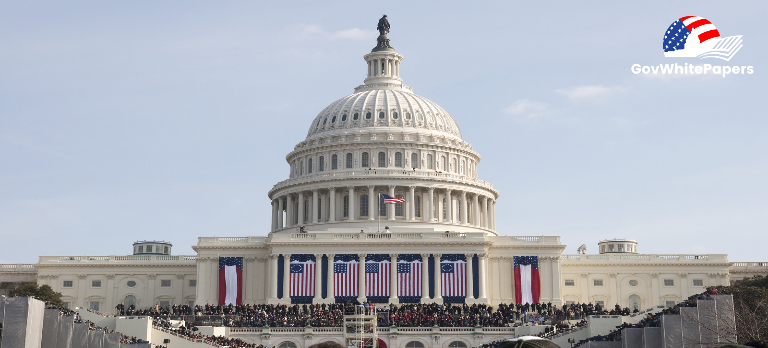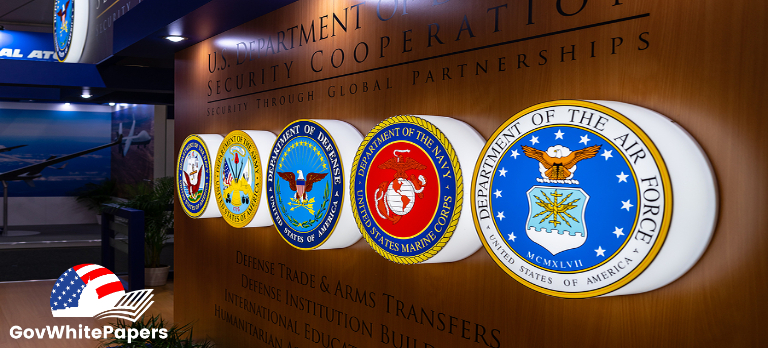President Biden campaigned with a promise to get serious about enacting meaningful change in terms of energy usage and production. In December of 2021, he put the plan into action with an Executive Order, Catalyzing Clean Energy Industries and Jobs Through Federal Sustainability. Under this order, federal agencies are directed to work toward three key sustainability goals:
- Transition federal infrastructure to zero-emission vehicles and buildings powered by carbon pollution-free electricity. This change will reduce the federal government’s greenhouse gas emissions by 65 percent by 2030 and achieve net-zero emissions by 2050.
- Make federal agencies more adaptive and resilient to the impacts of climate change, and increase the sustainability of federal supply chains, achieving net-zero emissions from federal procurement by 2050.
- Mainstream sustainability within the federal workforce, advance equity and environmental justice, and leverage partnerships to accelerate progress.
DoD and GSA have already issued a joint Request for Information (RFI) to gather industry input on how to supply the federal government with pollution-free electricity as part of this direction.
Of course, sustainability is not a new focus. Private sector and government alike have been looking at ways to use less energy while meeting the ever growing demand for energy dependent machines such as computers, data centers, sensors, and more.
Improving Data Centers
Improving efficiency in data centers has been a goal for over a decade. The Federal Data Center Consolidation Initiative (FDCCI) began in 2010 and transitioned to The Data Center Optimization Initiative (DCOI) in 2016. The last FITARA scorecard, issued in January 2022, found that all agencies have complied with this mandate, but that does not mean the work is over.
Companies are taking incredibly innovative approaches to better use available energy. Several data center vendors have been looking at ways to use liquid cooling and immersion, and water, solar and other renewable resources. Another approach growing in popularity is building data centers with a modular design. In this approach, data centers start physically smaller and increase in size based on need, rather than starting as a 200,000-square-foot facility.
Extending Sustainability to the Cloud
Related to data center work is how today’s most prolific cloud providers are producing the energy needed to keep services up and running. Companies like Amazon, Microsoft, Meta, and Google were some of the largest buyers of solar and wind power in 2021. The drawback of using solar and wind is the fact that sometimes it is just not available–such as nighttime and calm days without a breeze. Because of this, storing energy for a (literal) rainy day is crucial. A new approach is looking at alternatives to storing that energy in lithium ion batteries or in pumped-storage hydroelectricity systems. Rather, this study looks to store energy as data, or what they are calling “information batteries.”
With this approach, energy-intensive calculations could be conducted when renewable energy is in excess and the results stored when less power is needed – essentially load-shifting the compute demands. To do this, organizations need to be able to predict possible computations that might occur in the future. An example is YouTube. The company processes more than 700,000 hours of videos every day. Because many of these computations can be predicted, they can be performed when there is excess green energy. The data is then stored for later use, when there is less renewable energy available.
Better Predict Energy Use
Carrying through the idea of prediction, Las Vegas, NV is starting a program where they create a “digital twin” of the city to experiment with the impact new buildings, traffic changes, and other programs might have on the city’s carbon footprint. They can simulate and optimize large-scale building projects using automated real-time energy monitoring and geo-tagged smart data layers. Similar programs have been piloted in Phoenix, AZ, and Brooklyn, NY to help them to cut carbon emissions from commercial buildings.
Improving Transportation
With greener ways to power technology, high tech solutions can be used in other areas of sustainability like encouraging walking and public transport use. Houston, TX is expanding its smart city infrastructure with digital, interactive way-finding kiosks to enhance the pedestrian experience. The IKE (Interactive Kiosk Experience) Smart City kiosks offer a free Wi-Fi hotspot as well as a touchscreen that displays digital advertising, location-based informational listings, and interactive applications to promote local businesses and points of interest. To further sustainability efforts, IKE’s way-finding features will use aggregated public transit data to give citizens access to multimodal trip-planning options like public transit, bike share, scooters, ride-hailing or walking.
GovWhitePapers has a host of resources that detail work being done to make energy use more clean and sustainable:
- Supporting Electric Vehicle Supply Equipment Deployment – The Department of Energy’s Federal Energy Management Program (FEMP) helps federal agencies electrify their fleets and support the deployment of charging infrastructure. This document outlines the steps necessary for planning and executing the switch to electric fleets for federal agencies. FEMP offers technical guidance on electric vehicle supply equipment (EVSE) installations and site-specific planning through on-site and virtual EVSE Tiger Teams.
- Department of Homeland Security Climate Action Plan – This paper outlines the steps the Department is taking to tackle the climate crisis, including bolstering the Department’s ability to adapt to climate change, building national resilience, undertaking mitigation measures, and addressing key vulnerabilities. This plan is part of President Biden’s whole-of-government approach to confronting the climate crisis.
- Securing a Made in America Supply Chain for Critical Minerals – There is a growing need for responsibly sourced critical minerals to meet our climate, infrastructure, and global competitiveness goals. This brief provides details of the Biden-Harris Administration’s critical minerals strategy.
- Using Renewable Energy Certificates to Achieve Local Environmental Goals – This brief provides a basic explanation of what renewable energy certificates (RECs) are and how local governments can use them to achieve their environmental goals, providing three examples where local governments have successfully used RECs to meet their environmental goals.
- State Governance, Planning, & Financing to Enhance Energy Resilience – To help Governors and State Energy Offices strengthen state preparedness, this guide describes the range of resilience governance structures, plans, and funding mechanisms that states are leveraging to enhance energy resilience. The report is underscored by descriptive examples and case studies throughout.
- Storage Technology Modeling Input Data Report – The Storage Futures Study (SFS) is a multi-year research project to explore the role and impact of energy storage in the evolving electricity sector of the United States. This report synthesizes current and projected cost performance assumptions along with location availability for storage technologies through 2050 that will be used in scenario analysis for the SFS at both the bulk power and distribution system scales.
You can browse additional energy and environment assets through our search engine here:










